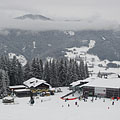(Optimalizované pre zariadenia s malou obrazovkou)
Downtown (Belváros district), Váci Street - Budapešť, Maďarsko
Po kliknutí:
Kliknutím na obrázky!
-

Pedestrian thoroughfare (pedestrian-only street)
Dátum fotenie: 20072007
Vytvoril: Robert Németh
Model fotoaparátu: Konica Minolta Dimage A200
Budapešť, Maďarsko
-

The "Sörforrás House" (formerly Kralovánszky tenement house)
Dátum fotenie: 20072007
Vytvoril: Robert Németh
Model fotoaparátu: Konica Minolta Dimage A200
Budapešť, Maďarsko
-
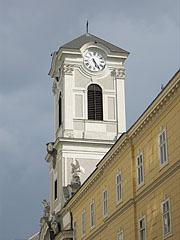
The steeple (tower) of the St. Michael's Church
Dátum fotenie: 20072007
Vytvoril: Robert Németh
Model fotoaparátu: Konica Minolta Dimage A200
Budapešť, Maďarsko
-

Váci1 Business Center and luxury department store
Dátum fotenie: 20132013
Vytvoril: Robert Németh
Model fotoaparátu: Konica Minolta Dimage A200
Budapešť, Maďarsko
-

Váci Street pedestrian area and shopping district
Dátum fotenie: 20112011
Vytvoril: Robert Németh
Model fotoaparátu: Konica Minolta Dimage A200
Budapešť, Maďarsko
-

Shops of book publishers on the occasion of the Festive Book Week (or "Festival Week of Books") on Váci Street
Dátum fotenie: 20072007
Vytvoril: Robert Németh
Model fotoaparátu: Konica Minolta Dimage A200
Budapešť, Maďarsko
-
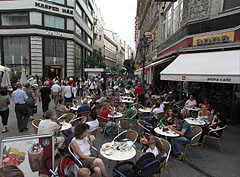
Tables of the Anna Café on Váci Street
Dátum fotenie: 20072007
Vytvoril: Robert Németh
Model fotoaparátu: Konica Minolta Dimage A200
Budapešť, Maďarsko
-
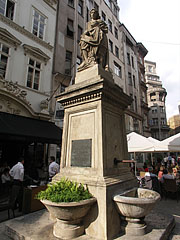
Fishermen's Fountain ("Halász-kút")
Dátum fotenie: 20072007
Vytvoril: Robert Németh
Model fotoaparátu: Konica Minolta Dimage A200
Budapešť, Maďarsko
-
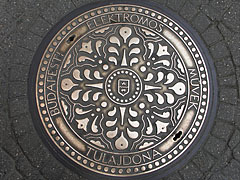
The ornamental manhole cover of the electricity company
Dátum fotenie: 20072007
Vytvoril: Robert Németh
Model fotoaparátu: Konica Minolta Dimage A200
Budapešť, Maďarsko
-

The Régi posta Street with a three-way lamp post
Dátum fotenie: 20072007
Vytvoril: Robert Németh
Model fotoaparátu: Konica Minolta Dimage A200
Budapešť, Maďarsko
-
Bacchus wine shop
Dátum fotenie: 20072007
Vytvoril: Robert Németh
Model fotoaparátu: Konica Minolta Dimage A200
Budapešť, Maďarsko
Bacchus wine shop - Budapešť, Maďarsko -
Zsolnay House or "House to the Elephant" (it was built in 1899)
Dátum fotenie: 20072007
Vytvoril: Robert Németh
Model fotoaparátu: Konica Minolta Dimage A200
Budapešť, Maďarsko
Zsolnay House or "House to the Elephant" (it was built in 1899) - Budapešť, Maďarsko -
Statue of a halberdier guard (or musketeer) on the facade of the former Officers' Casino (in Hungarian "Tiszti Kaszinó")
Dátum fotenie: 20072007
Vytvoril: Robert Németh
Model fotoaparátu: Konica Minolta Dimage A200
Budapešť, Maďarsko
Statue of a halberdier guard (or musketeer) on the facade of the former Officers' Casino (in Hungarian "Tiszti Kaszinó") - Budapešť, Maďarsko -
St. Michael's Church and the monastery of the Congregation of Jesus (the yellow building)
Dátum fotenie: 20072007
Vytvoril: Robert Németh
Model fotoaparátu: Konica Minolta Dimage A200
Budapešť, Maďarsko
St. Michael's Church and the monastery of the Congregation of Jesus (the yellow building) - Budapešť, Maďarsko -
A red letter box
Dátum fotenie: 20072007
Vytvoril: Robert Németh
Model fotoaparátu: Konica Minolta Dimage A200
Budapešť, Maďarsko
A red letter box - Budapešť, Maďarsko -
A street clock, and the continuation of the Váci Street (across the Szabad sajtó Street)
Dátum fotenie: 20072007
Vytvoril: Robert Németh
Model fotoaparátu: Konica Minolta Dimage A200
Budapešť, Maďarsko
A street clock, and the continuation of the Váci Street (across the Szabad sajtó Street) - Budapešť, Maďarsko -
The so-called Piarist Center building
Dátum fotenie: 20112011
Vytvoril: Robert Németh
Model fotoaparátu: Konica Minolta Dimage A200
Budapešť, Maďarsko
The so-called Piarist Center building - Budapešť, Maďarsko -
The "Little Boy Fountain" with a bronze figure of a male child
Created by Béni Ferenczy, 1977
Dátum fotenie: 20112011
Vytvoril: Robert Németh
Model fotoaparátu: Konica Minolta Dimage A200
Budapešť, Maďarsko
The "Little Boy Fountain" with a bronze figure of a male child - Budapešť, Maďarsko -
"Little Boy" Fountain
Created by Béni Ferenczy in 1977
Dátum fotenie: 20112011
Vytvoril: Robert Németh
Model fotoaparátu: Konica Minolta Dimage A200
Budapešť, Maďarsko
"Little Boy" Fountain - Budapešť, Maďarsko -
Bustle of tourists on the most important shopping street of Budapest
Dátum fotenie: 20112011
Vytvoril: Robert Németh
Model fotoaparátu: Konica Minolta Dimage A200
Budapešť, Maďarsko
Bustle of tourists on the most important shopping street of Budapest - Budapešť, Maďarsko -
Hard Rock Cafe restaurant on the corner of Váci1 Business Center
Dátum fotenie: 20132013
Vytvoril: Robert Németh
Model fotoaparátu: Konica Minolta Dimage A200
Budapešť, Maďarsko
Hard Rock Cafe restaurant on the corner of Váci1 Business Center - Budapešť, Maďarsko -
Váci1 Business Center
Dátum fotenie: 20132013
Vytvoril: Robert Németh
Model fotoaparátu: Konica Minolta Dimage A200
Budapešť, Maďarsko
Váci1 Business Center - Budapešť, Maďarsko -
Reliefs by Géza Maróti on the wall of Váci1 Business Center
Dátum fotenie: 20132013
Vytvoril: Robert Németh
Model fotoaparátu: Konica Minolta Dimage A200
Budapešť, Maďarsko
Reliefs by Géza Maróti on the wall of Váci1 Business Center - Budapešť, Maďarsko -
This shopping street of Budapest is very popular among the tourists
Dátum fotenie: 20132013
Vytvoril: Robert Németh
Model fotoaparátu: Konica Minolta Dimage A200
Budapešť, Maďarsko
This shopping street of Budapest is very popular among the tourists - Budapešť, Maďarsko -
Anna Café (the former "Belvárosi Áruház", downtown department store)
Dátum fotenie: 20132013
Vytvoril: Robert Németh
Model fotoaparátu: Konica Minolta Dimage A200
Budapešť, Maďarsko
Anna Café (the former "Belvárosi Áruház", downtown department store) - Budapešť, Maďarsko -
Anna Café Coffee House
Dátum fotenie: 20132013
Vytvoril: Robert Németh
Model fotoaparátu: Konica Minolta Dimage A200
Budapešť, Maďarsko
Anna Café Coffee House - Budapešť, Maďarsko -
Kristóf Square with the fountain, viewed from Váci Street
Dátum fotenie: 20132013
Vytvoril: Robert Németh
Model fotoaparátu: Konica Minolta Dimage A200
Budapešť, Maďarsko
Kristóf Square with the fountain, viewed from Váci Street - Budapešť, Maďarsko -
A branch of MKB Bank in the buildong of Anna Cafe
Dátum fotenie: 20132013
Vytvoril: Robert Németh
Model fotoaparátu: Konica Minolta Dimage A200
Budapešť, Maďarsko
A branch of MKB Bank in the buildong of Anna Cafe - Budapešť, Maďarsko -
Building decoration
Dátum fotenie: 20132013
Vytvoril: Robert Németh
Model fotoaparátu: Konica Minolta Dimage A200
Budapešť, Maďarsko
Building decoration - Budapešť, Maďarsko -
Terrace of the Anna Café, and the Váci1 Business Center
Dátum fotenie: 20132013
Vytvoril: Robert Németh
Model fotoaparátu: Konica Minolta Dimage A200
Budapešť, Maďarsko
Terrace of the Anna Café, and the Váci1 Business Center - Budapešť, Maďarsko -
The "Titsch House" tenement or apartment building
Designed by Ferenc Fazekas, built between 1906 and 1909
Dátum fotenie: 20132013
Vytvoril: Robert Németh
Model fotoaparátu: Konica Minolta Dimage A200
Budapešť, Maďarsko
The "Titsch House" tenement or apartment building - Budapešť, Maďarsko -
The Art Nouveau (or secession) style Titsch apartment building
Dátum fotenie: 20132013
Vytvoril: Robert Németh
Model fotoaparátu: Konica Minolta Dimage A200
Budapešť, Maďarsko
The Art Nouveau (or secession) style Titsch apartment building - Budapešť, Maďarsko -
The Philanthia Art Nouveau (secession style) flower shop (founded in 1909)
Dátum fotenie: 20132013
Vytvoril: Robert Németh
Model fotoaparátu: Konica Minolta Dimage A200
Budapešť, Maďarsko
The Philanthia Art Nouveau (secession style) flower shop (founded in 1909) - Budapešť, Maďarsko -
A carved stone balcony on the Thonet House
Dátum fotenie: 20132013
Vytvoril: Robert Németh
Model fotoaparátu: Konica Minolta Dimage A200
Budapešť, Maďarsko
A carved stone balcony on the Thonet House - Budapešť, Maďarsko -
A male figure statue in a niche on the wall of the Thonet House
Dátum fotenie: 20132013
Vytvoril: Robert Németh
Model fotoaparátu: Konica Minolta Dimage A200
Budapešť, Maďarsko
A male figure statue in a niche on the wall of the Thonet House - Budapešť, Maďarsko -
Thonet House
Dátum fotenie: 20132013
Vytvoril: Robert Németh
Model fotoaparátu: Konica Minolta Dimage A200
Budapešť, Maďarsko
Thonet House - Budapešť, Maďarsko -
Original blue glazed Zsolnay tiles on the facade of the Thonet House
Dátum fotenie: 20132013
Vytvoril: Robert Németh
Model fotoaparátu: Konica Minolta Dimage A200
Budapešť, Maďarsko
Original blue glazed Zsolnay tiles on the facade of the Thonet House - Budapešť, Maďarsko -
A stone canopy (looks like a "baldachin") with a statue of a lady, on the Thonet House
Dátum fotenie: 20132013
Vytvoril: Robert Németh
Model fotoaparátu: Konica Minolta Dimage A200
Budapešť, Maďarsko
A stone canopy (looks like a "baldachin") with a statue of a lady, on the Thonet House - Budapešť, Maďarsko -
The Thonet House in Váci Street
Dátum fotenie: 20132013
Vytvoril: Robert Németh
Model fotoaparátu: Konica Minolta Dimage A200
Budapešť, Maďarsko
The Thonet House in Váci Street - Budapešť, Maďarsko -
Hermes Fountain (or drinking well) in front of the Fontana department store
Dátum fotenie: 20132013
Vytvoril: Robert Németh
Model fotoaparátu: Konica Minolta Dimage A200
Budapešť, Maďarsko
Hermes Fountain (or drinking well) in front of the Fontana department store - Budapešť, Maďarsko -
Hermes Fountain and drinking well
Dátum fotenie: 20132013
Vytvoril: Robert Németh
Model fotoaparátu: Konica Minolta Dimage A200
Budapešť, Maďarsko
Hermes Fountain and drinking well - Budapešť, Maďarsko -
Hermes Fountain and drinking well
Dátum fotenie: 20132013
Vytvoril: Robert Németh
Model fotoaparátu: Konica Minolta Dimage A200
Budapešť, Maďarsko
Hermes Fountain and drinking well - Budapešť, Maďarsko -
Statue on the facade of the Sörforrás House
Dátum fotenie: 20132013
Vytvoril: Robert Németh
Model fotoaparátu: Konica Minolta Dimage A200
Budapešť, Maďarsko
Statue on the facade of the Sörforrás House - Budapešť, Maďarsko -
Sörforrás House (it means something like: "Beer Source House", built in 1901), with the Sörforrás Restaurant since 1991
Dátum fotenie: 20132013
Vytvoril: Robert Németh
Model fotoaparátu: Konica Minolta Dimage A200
Budapešť, Maďarsko
Sörforrás House (it means something like: "Beer Source House", built in 1901), with the Sörforrás Restaurant since 1991 - Budapešť, Maďarsko -
Italian Restaurant in the former Hotel Taverna, and the pedestrian street (undergoing renovation)
Dátum fotenie: 20132013
Vytvoril: Robert Németh
Model fotoaparátu: Konica Minolta Dimage A200
Budapešť, Maďarsko
Italian Restaurant in the former Hotel Taverna, and the pedestrian street (undergoing renovation) - Budapešť, Maďarsko -
Show-window
Dátum fotenie: 20132013
Vytvoril: Robert Németh
Model fotoaparátu: Konica Minolta Dimage A200
Budapešť, Maďarsko
Show-window - Budapešť, Maďarsko -
Cucina Italian Restaurant on the ground floor of the former Hotel Taverna (currently Hotel Mercure)
Dátum fotenie: 20132013
Vytvoril: Robert Németh
Model fotoaparátu: Konica Minolta Dimage A200
Budapešť, Maďarsko
Cucina Italian Restaurant on the ground floor of the former Hotel Taverna (currently Hotel Mercure) - Budapešť, Maďarsko -
The former Taverna Hotel (currently Mercure Budapest City Center Hotel)
Dátum fotenie: 20132013
Vytvoril: Robert Németh
Model fotoaparátu: Konica Minolta Dimage A200
Budapešť, Maďarsko
The former Taverna Hotel (currently Mercure Budapest City Center Hotel) - Budapešť, Maďarsko -
A sculpture of a pegasus (a mythical winged horse) between flags, on the wall of the former Hotel Taverna
Dátum fotenie: 20132013
Vytvoril: Robert Németh
Model fotoaparátu: Konica Minolta Dimage A200
Budapešť, Maďarsko
A sculpture of a pegasus (a mythical winged horse) between flags, on the wall of the former Hotel Taverna - Budapešť, Maďarsko -
Statue of a pegasus on the wall of the former Hotel Taverna
Created by Pál Kő in 1985
Dátum fotenie: 20132013
Vytvoril: Robert Németh
Model fotoaparátu: Konica Minolta Dimage A200
Budapešť, Maďarsko
Statue of a pegasus on the wall of the former Hotel Taverna - Budapešť, Maďarsko -
Hotel Mercure City Center, originally Hotel Taverna
Designed by József Finta and Gyula Csizmár in 1985
Dátum fotenie: 20132013
Vytvoril: Robert Németh
Model fotoaparátu: Konica Minolta Dimage A200
Budapešť, Maďarsko
Hotel Mercure City Center, originally Hotel Taverna - Budapešť, Maďarsko -
The building known as Lyka apartment building, from the Piarista Street
The Lyka Apartment House was built for the Greek-born Lyka family between 1875-1877, designed by Imre Steindl and the building contractor was János Kauser (the house was slightly redesigned in 1892).
Dátum fotenie: 20132013
Vytvoril: Robert Németh
Model fotoaparátu: Konica Minolta Dimage A200
Budapešť, Maďarsko
The building known as Lyka apartment building, from the Piarista Street - Budapešť, Maďarsko -
The vaulted passage under the building of the Piarist Center
Dátum fotenie: 20132013
Vytvoril: Robert Németh
Model fotoaparátu: Konica Minolta Dimage A200
Budapešť, Maďarsko
The vaulted passage under the building of the Piarist Center - Budapešť, Maďarsko -
The northern Klotild Palace
Dátum fotenie: 20132013
Vytvoril: Robert Németh
Model fotoaparátu: Konica Minolta Dimage A200
Budapešť, Maďarsko
The northern Klotild Palace - Budapešť, Maďarsko -
Fidji Style luxury shop in the Klotild Palace
Dátum fotenie: 20132013
Vytvoril: Robert Németh
Model fotoaparátu: Konica Minolta Dimage A200
Budapešť, Maďarsko
Fidji Style luxury shop in the Klotild Palace - Budapešť, Maďarsko -
The vaulted passage of the Piarista Alley
Dátum fotenie: 20132013
Vytvoril: Robert Németh
Model fotoaparátu: Konica Minolta Dimage A200
Budapešť, Maďarsko
The vaulted passage of the Piarista Alley - Budapešť, Maďarsko -
Buddha-bar Hotel in the Klotild Palace
Dátum fotenie: 20132013
Vytvoril: Robert Németh
Model fotoaparátu: Konica Minolta Dimage A200
Budapešť, Maďarsko
Buddha-bar Hotel in the Klotild Palace - Budapešť, Maďarsko -
Klotild Palace, an entrance of Hotel Buddha Bar
Dátum fotenie: 20132013
Vytvoril: Robert Németh
Model fotoaparátu: Konica Minolta Dimage A200
Budapešť, Maďarsko
Klotild Palace, an entrance of Hotel Buddha Bar - Budapešť, Maďarsko -
Klotild Palace, decorations on one of the gates of Buddha-bar Hotel
Dátum fotenie: 20132013
Vytvoril: Robert Németh
Model fotoaparátu: Konica Minolta Dimage A200
Budapešť, Maďarsko
Klotild Palace, decorations on one of the gates of Buddha-bar Hotel - Budapešť, Maďarsko -
Residental building
Dátum fotenie: 20132013
Vytvoril: Robert Németh
Model fotoaparátu: Konica Minolta Dimage A200
Budapešť, Maďarsko
Residental building - Budapešť, Maďarsko -
The pedestrian area is under renovation
Dátum fotenie: 20132013
Vytvoril: Robert Németh
Model fotoaparátu: Konica Minolta Dimage A200
Budapešť, Maďarsko
The pedestrian area is under renovation - Budapešť, Maďarsko -
The former Royal Hungarian Officers' Casino (today the building is the headquarters of MKB Bank)
Dátum fotenie: 20132013
Vytvoril: Robert Németh
Model fotoaparátu: Konica Minolta Dimage A200
Budapešť, Maďarsko
The former Royal Hungarian Officers' Casino (today the building is the headquarters of MKB Bank) - Budapešť, Maďarsko -
An armored soldier with a musket, a metal (tinplate) sculpture on the wall of the former National Officers' Casino building
Dátum fotenie: 20132013
Vytvoril: Robert Németh
Model fotoaparátu: Konica Minolta Dimage A200
Budapešť, Maďarsko
An armored soldier with a musket, a metal (tinplate) sculpture on the wall of the former National Officers' Casino building - Budapešť, Maďarsko -
The Saint Michael's Church and the monastery of the Congregation of Jesus (in Hungarian "Angolkisasszonyok")
Dátum fotenie: 20132013
Vytvoril: Robert Németh
Model fotoaparátu: Konica Minolta Dimage A200
Budapešť, Maďarsko
The Saint Michael's Church and the monastery of the Congregation of Jesus (in Hungarian "Angolkisasszonyok") - Budapešť, Maďarsko -
Gift shops in front of the Zsolnay-ceramics covered Art Nouveau style Korányi House
The building was designed by Zoltán Bálint and Lajos Jámbor, built in 1908
Dátum fotenie: 20132013
Vytvoril: Robert Németh
Model fotoaparátu: Konica Minolta Dimage A200
Budapešť, Maďarsko
Gift shops in front of the Zsolnay-ceramics covered Art Nouveau style Korányi House - Budapešť, Maďarsko -
Európa Café
Dátum fotenie: 20132013
Vytvoril: Robert Németh
Model fotoaparátu: Konica Minolta Dimage A200
Budapešť, Maďarsko
Európa Café - Budapešť, Maďarsko -
Memorial plaque of Charles XII King of Sweeden, also known as Carl of Sweden
It was inaugurated in 1914, created by Ottó Jarl
Dátum fotenie: 20132013
Vytvoril: Robert Németh
Model fotoaparátu: Konica Minolta Dimage A200
Budapešť, Maďarsko
Memorial plaque of Charles XII King of Sweeden, also known as Carl of Sweden - Budapešť, Maďarsko -
Pedestrian street
Dátum fotenie: 20132013
Vytvoril: Robert Németh
Model fotoaparátu: Konica Minolta Dimage A200
Budapešť, Maďarsko
Pedestrian street - Budapešť, Maďarsko -
The Wüsztner Pension, an Art Nouveau style corner building
It was built in 1912, architect: József Kommer
Dátum fotenie: 20132013
Vytvoril: Robert Németh
Model fotoaparátu: Konica Minolta Dimage A200
Budapešť, Maďarsko
The Wüsztner Pension, an Art Nouveau style corner building - Budapešť, Maďarsko
Kliknutím na obrázky!
Charakteristiky, vlastnosti, rysy
Poloha:
GPS súradnice: Šířka 47°29'35", Dĺžka 19°3'10" (N47 29.58 - E19 3.17)
Informácie, krátke poviedky, zaujímavé fakty
 Fishermen's Fountain ("Halász-kút")
Fishermen's Fountain ("Halász-kút")
The ornate drinking fountain in the Kristóf Square close to the Váci Street is the so-called Fishermen's Fountain or the Fishmonger Girl's Fountain (in Hungarian "Halász-kút" or "Haláruslány-kút"). It is a reconstruction of an older fountain, restored by the Hungarian sculptor Sándor Lovas in 1985.
The original statue and fountain was created for the fishing guild of Pest, by László Dunaiszky in 1862. It was set up in the Hal tér (literally "Fish Square") on the site of a demolished 19th-century public fountain. At that time the currently no longer existing Hal tér or Hal Square was a fish market, its well or fountain provided the best drinking water for the citizens of Pest. Later in 1899 the square was eliminated due to the building of the old Elizabeth Bridge ("Erzsébet híd"), and the fountain was moved to the Népliget ("People's Park"). In 1964 the statue was dismantled due to roadworks. Although there was a promise to build up the statue later, it did not happen, and to top it all the artwork was erased from the official monument list.
Therefore it was just a lucky coincidence that György Rajna explored and identified the parts of the sculpture in a warehouse of the Népliget park. The statue and fountain was reconstructed by Sándor Lovas based on these parts, then in 1985 it was placed in the downtown not so far from its original site, in Kristóf Square.
 The "Sörforrás House" (formerly Kralovánszky tenement house)
The "Sörforrás House" (formerly Kralovánszky tenement house)
The Art Nouveau (secession) style Sörforrás House (literally "Beer Source House" or "Beer Spring House") is situated in the Váci Street in Downtown, it was designed by Lajos Hofhauser in 1901, its storeys represent different styles. On the top level there are Venetian style windows, on the lower storeys these are replaced by German gothic style architectural elements. On the lowest part of the building a beautiful oak-wooden carved shop portal (storefront with shop window) puts the crown on the building (even thought it is a catachresis). In some details and decoration motifs of the facade probably the effect of the typical Hungarian secession, the Art Nouveau of Ödön Lechner can be observed as well.
 Zsolnay House or "House to the Elephant" (it was built in 1899)
Zsolnay House or "House to the Elephant" (it was built in 1899)
On the corner of the Pest downtown Váci Street and Duna Street there is a former apartment and office of the owner of the famous Zsolnay Porcelain Manufacture of Pécs. This is the so-called Zsolnay House, it was built in 1899. On its white facade there is an elephant sculpture for unknown reasons, as well as on the corner above the door the trademark of the Zsolnay factory, a relief representing a five-towered castle. On the facade that overlooks the Danube River there is a coloured pyro-granite relief under the balcony, representing women who paints a ceramic vessel (an amphora), referring probably to the former owners of the building.
 Statue of a halberdier guard (or musketeer) on the facade of the former Officers' Casino (in Hungarian "Tiszti Kaszinó")
Statue of a halberdier guard (or musketeer) on the facade of the former Officers' Casino (in Hungarian "Tiszti Kaszinó")
The former National Officers' Club or National Officers' Casino (or even earlier the Hungarian Royal Officers' Club) building is "guarded" by two 3.5-meter-tall soldier statues. The bronze-brown color of the statues is misleading, these were made of tin plate (sometimes they are called "bádogvitéz" by the Hungarian people, literally "tin soldiers", although this word means something else in English). In addition, initially their color was the same as the building color as well. The figure on the left with a wide-brimmed hat and high boots is a typical 17th-century guard or soldier, there is a halberd in his hand and he is carrying a sword on his left. The halberdier or musketeer soldier on the right is wearing an armor and a helmet, and he keeps a firearm (more precisely a musket gun) on his shoulder. The statues were made by Kálmán Frank in 1899.
 The so-called Piarist Center building
The so-called Piarist Center building
The imposing building block between the Váci Street and the Március 15 Square was originally built for the Piarist Order between 1915-1917, designed by Dezső Hültl. From 1953 until 2010 it was the building of the Eötvös Loránd University Faculty of Humanities (ELTE BTK). Since 2011 it is the home of the Piarist Secondary School and Convent again.
 Váci1 Business Center and luxury department store
Váci1 Business Center and luxury department store
The Váci1 Business Center at the junction of the downtown Vörösmarty Square and the Váci Street was originally a bank building, designed by Ignác Alpár (born as Ignác Schöckl), built between 1911-1915. One of the first five ferro-concrete (reinforced-concrete) building in Hungary. This building material was a novetly at that time, but it gave more freedom for the architects to create new shapes and decorations.
The building was sometimes called "The Hat of Ignác Alpár" probably due to its rounded bastion-like corner. It was built for the First National Savings Association of Pest (it is actually the predecessor of the present OTP Bank), throughout their history, it was their third headquarters. The tender already contained that there should be business and shop premises on the ground floor, and rental apartments on the top level. In contrast it, the vertically middle section of the bulding with the three-storey tall "columns" on the facade emphasizes its bank character as well. The building is quite liberal with the interior spaces as well, more than 40 percent of the total usable area is a spacious staircase or corridor. There were numerous things in the building that were novelties or technical achievements in its time, among others a central heating and cooling system.
After 1989 the UNESCO Wold Heritage listed monument bulding was the head office of the Budapest Bank, then the Budapest Stock Exchange (BÉT or BSE). The last reconstructions-renovations were finished in 2013, by the plans of the French architect Christian Biecher, as well as the Hungarian architects Tamás Kőnig and Péter Wagner. The new Váci1 was opened at this time, the present style of the luxury shopping and entertainment center is quite different from the initial style of the building.
 Váci1 Business Center
Váci1 Business Center
The northern gate of the medieval city wall of Pest was situated at the junction of the Váci Street and the Vörösmarty Square until 1789. It was the so-called Vác Gate or in the old manner Vácz Gate (in Hungarian "Váci-kapu" or "Váczi-kapu"). Here began the road from Pest town towards Vác town, so this is the simple reason why the name of the current pedestrian mall is "Váci utca" or Váci Street. There's a memorial plaque of the gate on the wall of the Váci1 luxury business center. The trace of the former city wall of Pest is actually coincides the current border of the "Belváros" or Downtown quarter, that is part of the 5th district.
The former bank building, that was built between 1911-1915 by the plans of Ignác Alpár (it is the present Váci1 commercial and entertainment center). Is exactly on the site of the former city wall: the 1.8-meter-wide and 10-meter-high city wall of Pest and its Vác Gate were situated where the southern side of the building is today, as well as the northern side of the building was built over the former moat (water ditch).
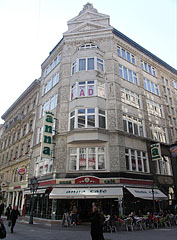 Anna Café (the former "Belvárosi Áruház", downtown department store)
Anna Café (the former "Belvárosi Áruház", downtown department store)
The building of the present Anna Café was built in 1912. The former Anna Presszó (today Anna Café or Coffeehouse) was opened on the ground floor in 1954, it is a favorite meeting place of famous people, as well as supposedly the first Wurlitzer jukebox (automated music-playing device) of Hungary could be found here. On the site of the building formerly the so-called "Vastuskós" House (literally "House with the Iron Trunk") was situated, which got its name after the tree trunk on its corner, that was full of iron nails. Even the famous Danish writer and fabulist Hans Christian Andersen mentioned it in his writings after he visited Pest.
The "iron trunk" was the sign of the spice grocery, a tenant of the house, and also the memento of an old German tradition. Until the early-19th century there was a tradition in many towns that the wandering apprentices (students) had to hammer an iron nail or a metal plate into a tree trunk that was selected especially for this reason, if they couldn't open a certian padlock that was on the trunk. As the time went these trunks were getting full of nails, and almost seemed to be made of iron. That's why these were called "iron trunks", in German "Stock im Eisen". When this tradition began to disappear these trunks were started to be used as trade-signs in front of the shops. Nowadays there can be found one on the corner of the Iskola Street and the Vám Street in Buda, Budapest, however it is just a copy.
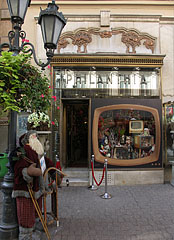 The Philanthia Art Nouveau (secession style) flower shop (founded in 1909)
The Philanthia Art Nouveau (secession style) flower shop (founded in 1909)
In the inner city at 9 Váci Street there is the so-called Seven Electors' House (in Hungarian "Hét választófejedelem-ház") or as earlier called the Nákó House. The neo-classical style building was designed by József Hild in 1840. On its site earlier there was an inn, in its assembly hall the world famous Hungarian composer Ferenc Liszt (or Franz Liszt) gave a concert in 1823, when he was only 12 years old. The Nákó House was functioned as the Hotel Nemzeti (National Hotel) between 1862 and 1902, later its courtyard was changed and the Corso Cinema was built here. Presently the building is the home of the acting company of the Pesti Színház (Pesti Theater), as well as on the Váci Street front there is the only one existing and functioning Art Nouveau style flower and decoration shop of Hungary, the Philantia flower shop (designed by Albert Kőrössy, built in 1909).
 The Thonet House in Váci Street
The Thonet House in Váci Street
The Thonet House in Váci Street in the Downtown of Budapest was formerly a store of the Thonet furniture manufacturing company of Vienna. The early Art Nouveau (secession) style building was built between 1888-1890, designed by the Hungarian architects Ödön Lechner, Gyula Pártos and János Klein H. The main facade is completely designed by Ödön Lechner, a personal tragedy of the master has big influence on its style: after the death of his wife he went to a study tour to France, there he got the inspiration to the particular motifs of the building.
Almost miraculously the Thonet House was survived the bombings in the World War II without any serious damage, there are still the original pyrogranite and blue glazed Zsolnay ceramic tiles on the facade. On the top storey of the house there are two statues, full-length female and male figures are standing in wall niches under stone canopies.
 Hermes Fountain and drinking well
Hermes Fountain and drinking well
The Hermes Fountain (or Mercury Fountain, in the ancient Roman mythology Mercury is the equivalent god to Hermes), the statue is a bronze copy based on an artwork of the Italian sculptor Giovanni da Bolona (1529-1608), the copy was commissioned by the Budapest Gallery, it was created in 1985. The original Hermes statue stood in a wall niche in the buose at 6 Duna Street. The neo-classical style body of the fountain was designed by the Hungarian architect László Wild.
 The former Royal Hungarian Officers' Casino (today the building is the headquarters of MKB Bank)
The former Royal Hungarian Officers' Casino (today the building is the headquarters of MKB Bank)
There is a big white building the Váci Street in the inner city, with full-length statues of two uniformed soldiers on the wall. This building is the former National Officers' Club or National Officers' Casino, built in 1899, designed by Rudolf Khittel and Ernő Krickl. The three-story Váci Street side part of the building was the home of the club and casino, the other premises were used for military purposes. It was also a community center, for example the Army Art Ensemble (in Hungarian "Honvéd Együttes") was formed here. This building was later the head office of the MOGÜRT foreign trade company, then since 1993 it is the headquarters of the MKB Bank (Hungarian Foreign Trade Bank, in Hungarian "Magyar Külkereskedelmi Bank").
Budapešť - Ďalšie fotogalérie:
Tiež by vás mohlo zaujímať (Súvisiace stránky):
Destinácie v cestovnom sprievodcu:
Budapešť (8 468 fotky + 21 panoramatické zábery)
Buda Hills (Budai-hegység) (8 632 fotky + 21 panoramatické zábery)
Pest megye (county) (15 122 fotky + 50 panoramatické zábery)
Budapešť a jeho okolie (15 989 fotky + 52 panoramatické zábery)
Maďarsko (27 287 fotky + 163 panoramatické zábery)
a okrem toho:
(v rámci tu: Buda Hills)
Budakeszi (88 fotky)
Pilisszentiván (76 fotky)
Každá panoramatické fotografie tu:
Budapešť (21 fotky)
Pest megye (county) (50 fotky)
Budapešť a jeho okolie (52 fotky)
Maďarsko (163 fotky)
Európa (165 fotky)
Každý normálny foto tu:
Budapešť (8 468 fotky / 122 galéria)
Buda Hills (Budai-hegység) (8 632 fotky / 124 galéria)
Pest megye (county) (15 122 fotky / 221 galéria)
Budapešť a jeho okolie (15 989 fotky / 234 galéria)
Maďarsko (27 287 fotky / 462 galéria)
Európa (30 494 fotky / 523 galéria)
https://www.panadea.com/sk/guidebook/budapest/photos/gal-058

Pridať k Obľúbeným Pridať k Záložkám
Zdieľajte so svojimi priateľmi!
atď.
Náš cestovný sprievodca obsahuje:
Početné fotky a panoramatické obrázky, s množstvom informácií a zaujímavých faktov.
- 214 turistické destinácie
- 165 panoramatické zábery
- 30 494 ďalšie fotografie
Veľká zbierka vybraných fotografií: výborná kvalita, vysoké rozlíšenie a prirodzené farby
Všetky práva vyhradené
- ©2010-2022
Neuronit Creative Studio - Mogyoród / Budapešť / Maďarsko


